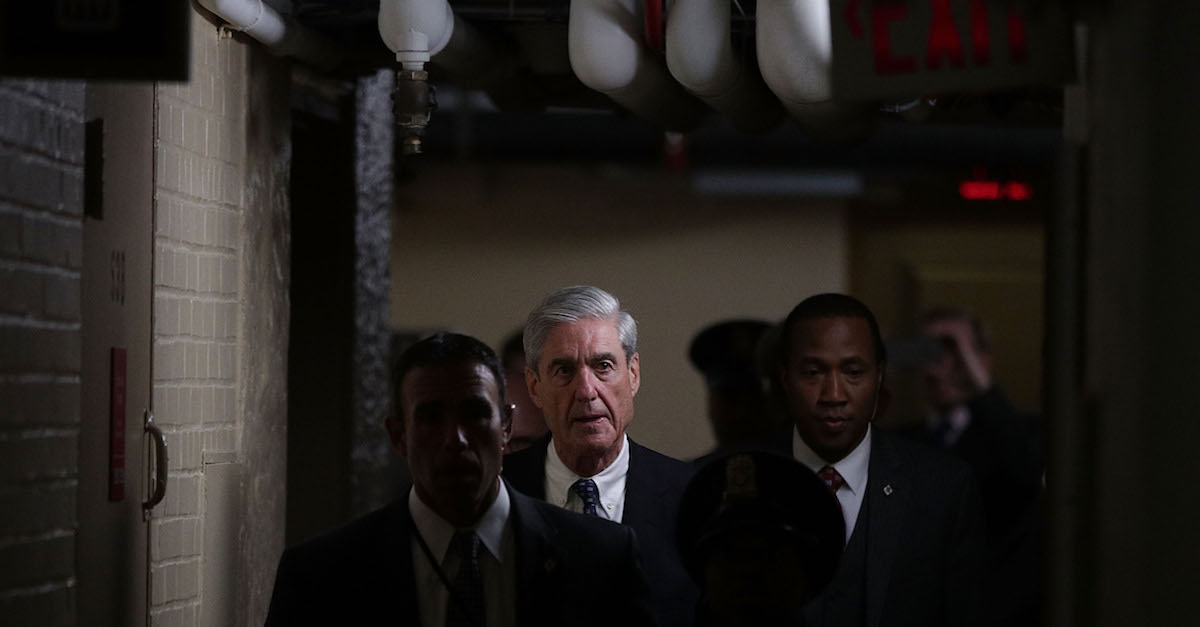
The U.S. Supreme Court granted two motions favorable to the mystery company who seems to be locked in legal battle with Special Counsel Robert Mueller on Tuesday. Via two separate orders, the Supreme Court allowed the unknown and increasingly mysterious filer to keep up appearances in secret, although the public will now be able to at least get some information.
The foreign-owned company from an unidentified country recently made two requests of the nation’s high court.
First, their attorneys had asked for the ability to file “the application for stay, the response, and the reply under seal presented to The Chief Justice.” Second, they had requested the ability to file their “petition for a writ of certiorari under seal with redacted copies for the public record.” Both requests were granted.
Let’s address those in reverse order.
On the morning of January 8, the foreign-owned firm’s legal team filed a motion for leave in order to file their petition for writ of certiorari under seal. A motion for leave is a formal request to dispense with legal formalities or tradition. A petition for writ of certiorari is the official way most cases are requested for review by the U.S. Supreme Court. In other words, the mystery foreign group asked the Supreme Court’s permission for the ability to make a formal request for review–and to keep it mostly secret.
As University of Texas Law Professor Steve Vladeck previously noted, this is an unprecedented request because such a level of secrecy has never really been accepted by the high court.
“There have been sealed applications like this before,” Vladeck noted late last year, “but so far as we know, [the Supreme Court] has never in its history conducted plenary review, including oral argument, in a case that remained entirely under seal.”
The upshot here is twofold: (1) the Supreme Court is allowing the smoke and mirrors to continue for now; Mueller’s mystery opponent appears to have gotten farther than any other petitioner making such requests for legal lock-and-key; but (2) at least some knowledge will trickle down into the public domain sooner rather than later because the foreign company’s official review request will be released on the public record–albeit with a lot of black boxes for redactions.
During the afternoon of January 8, the Supreme Court handed the mystery filers a bit of a loss by declining to invalidate a contempt order issued by the D.C. Circuit Court of Appeals. The lower court was previously left unconvinced by the foreign company’s argument that complying with a grand jury subpoena would violate the domestic laws of the country from which the company hails. That contempt order was briefly paused by Chief Justice John Roberts in a brief holiday stay issued on Christmas Eve eve before the government filed their response.
After the full court issued their invalidation of the previous Roberts stay, the foreign-owned company then asked for permission to formally reply to the entire Supreme Court–again under the secrecy of a judicial seal. Additionally, the company requested for all other legal filings associated with the contempt aspect of their case to be filed under seal as well. The Supreme Court also allowed the mystery to continue here.
Of course, not everybody’s happy with all the cloak and dagger. Last week, the Reporters Committee for Freedom of the Press filed a motion for leave requesting to intervene in the mystery filing in order to get some information about the case out of these complicated shadows. Part of that request was for filings to be made available to the public (with appropriate redactions), and for any oral arguments to be public as well.
[Image via Alex Wong/Getty Images]